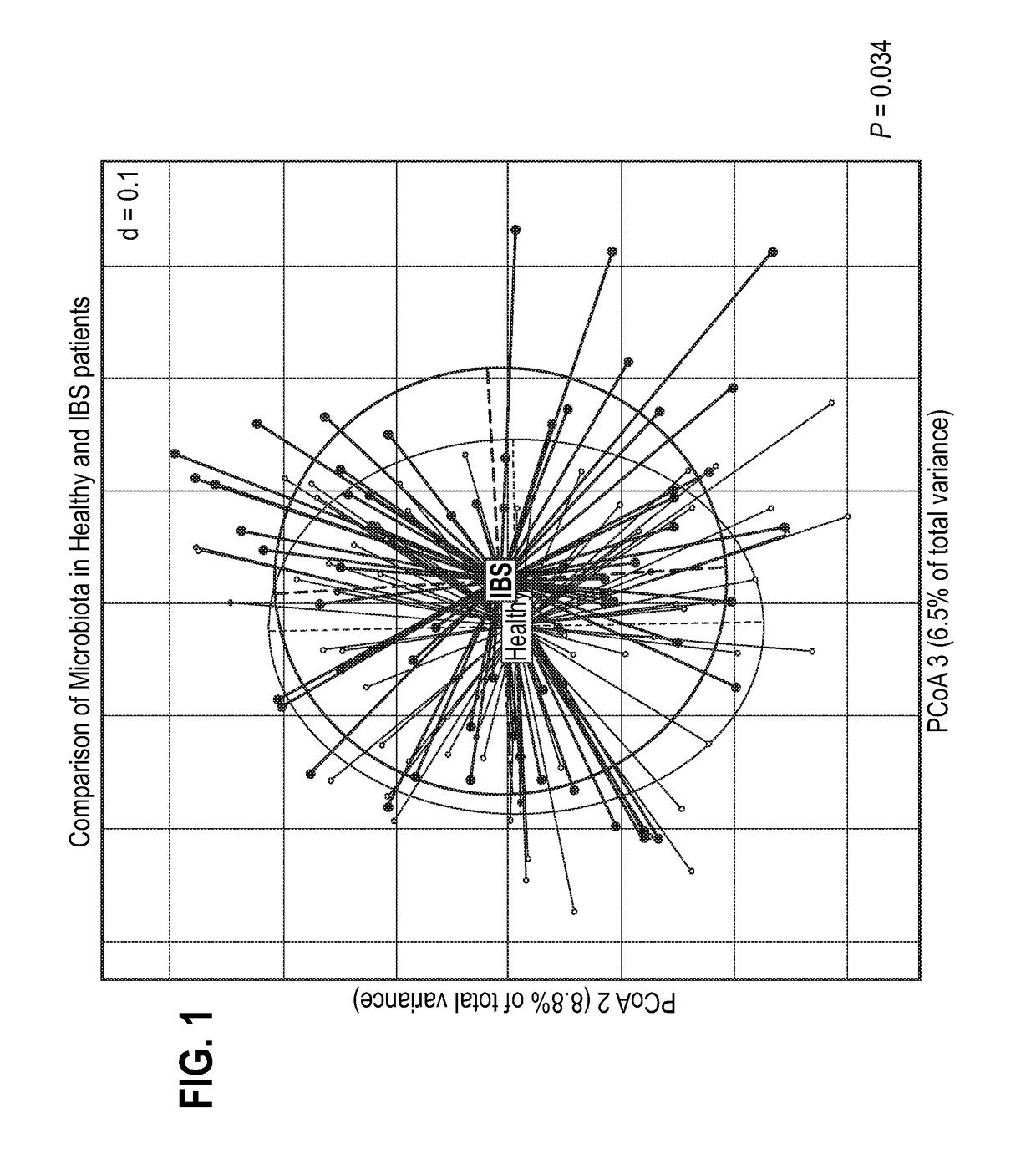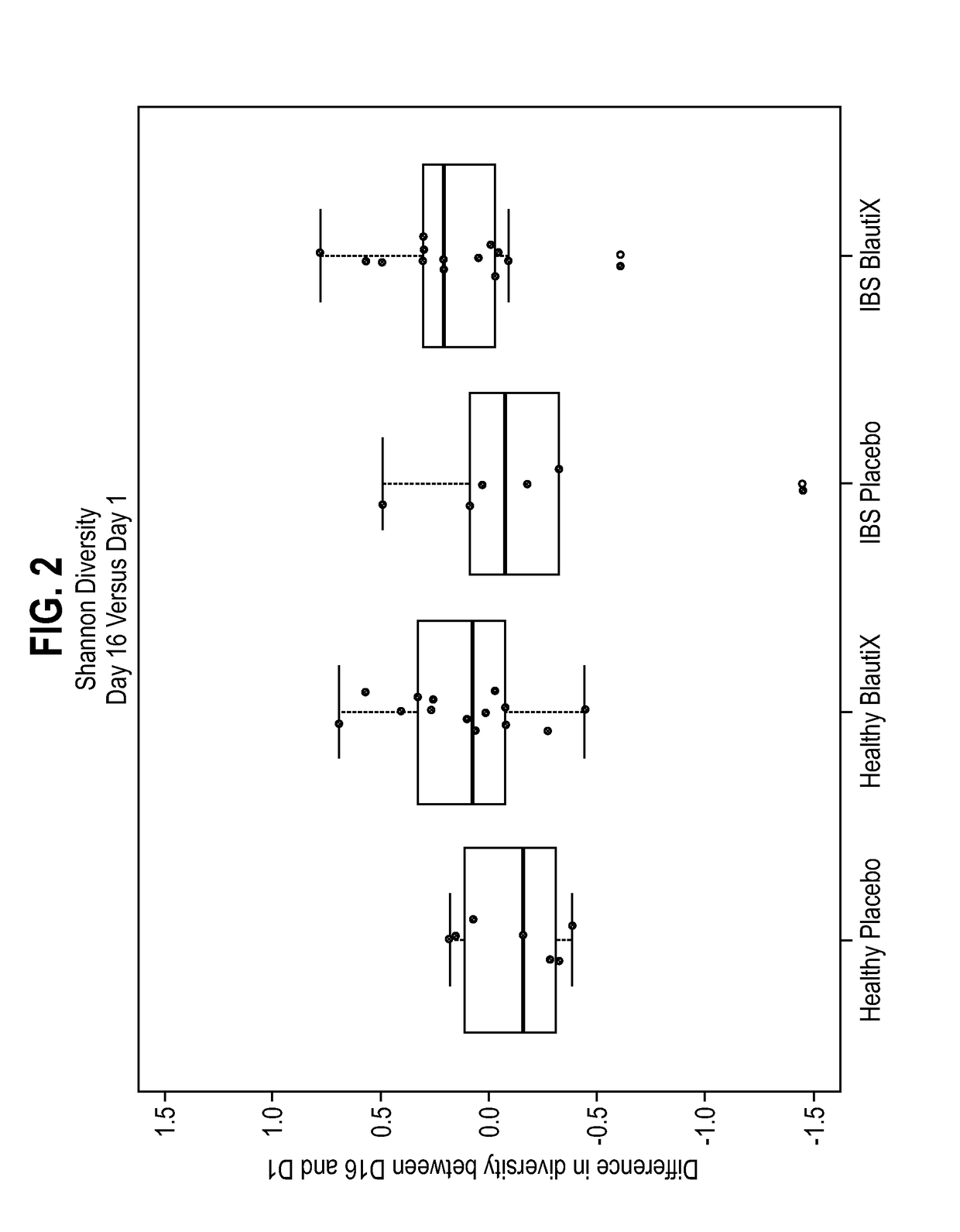Compositions comprising bacterial strains
a technology of bacterial strains and compositions, applied in the field of compositions comprising bacterial strains, can solve the problems of re-establishing healthy microbiota, posing more questions, and variable date, and achieve the effect of the same safety and therapeutic effect characteristics
- Summary
- Abstract
- Description
- Claims
- Application Information
AI Technical Summary
Benefits of technology
Problems solved by technology
Method used
Image
Examples
example 2
e Effect in Models of Neurodevelopmental Disorders
The BTBR Mouse Model
[0168]The BTBR mouse model uses inbred, genetically modified mice that display a robust autistic-like phenotype. Deficits in social behaviours, increased repetitive behaviours and increased anxiety-related behaviours have been reported in this strain [51]. Due to this robust behavioural phenotype, the BTBR mouse is an ideal animal model to assess the efficacy of novel therapeutic agents for the treatment of autistic-related behaviours. Alleviation of such symptoms by a live biotherapeutic can also be indicative of efficacy of the biotherapeutic in the treatment of other psychiatric or neurological diseases.
Mice
[0169]Male BTBR mice were bred in house. The animals were housed in a temperature- and humidity-controlled room on a 12 hr dark cycle (lights on from 7:00-19:00 hr). All experiments were conducted in accordance with the European Directive 2010 / 63 / EEC, the requirements of S.I. No 543 of 2012, and approved by ...
example 3
Models of Cerebral Ischemia
Summary
[0179]The protective effect of Blautia hydrogenotrophica was tested in mouse models of cerebral ischemia. To this end three groups of 5-17 mice were tested. Only normally behaving animals were included in the study. The first dosing day was Day −14. One group received freeze dried bacteria daily from the first dosing day until termination. The control groups received either vehicle or lyobuffer.
[0180]On Day 1, all mice were anesthetized. A midline incision was created in the ventral side of the neck to expose the right and left common carotid-arteries. A cerebral ischemia-reperfusion I / R model was then induced by bilateral common carotid artery occlusion (BCCAO) using vascular clips for 15 minutes. At the end of each occlusion, the clips were removed.
Strain
[0181]Blautia hydrogenotrophica bacterium deposited under accession number DSM 10507 and also under accession number DSM 14294.
Administration Schedule
[0182]
No. ofDose VolumesAnimalsTreatmentDose L...
example 4
e Effect in Models of Neuroinflammatory Conditions
[0201]Experimental Autoimmune Encephalomyelitis (EAE) is a mouse model of CNS inflammation that mirrors many aspects of the human disease MS and EAE is the most commonly used experimental model for human MS. EAE is also used more generally as a model for CNS-specific autoimmune disorders [52] and for other specific conditions, including acute disseminated encephalomyelitis. EAE is induced using immunisation with myelin peptides and adjuvants to elicit an immune and inflammatory response that closely corresponds to the mechanisms underlying many autoimmune and inflammatory disorders of the CNS, and in particular MS. Many therapies showing efficacy in EAE have also shown efficacy in treatment of MS in human patients [52]. Most importantly, EAE reproduces key features of MS, including inflammation, demyelination, axonal loss and gliosis. The effects of demyelination are mainly restricted to the spinal cord in EAE, with little alteration...
PUM
| Property | Measurement | Unit |
|---|---|---|
| time | aaaaa | aaaaa |
| time | aaaaa | aaaaa |
| time | aaaaa | aaaaa |
Abstract
Description
Claims
Application Information
 Login to View More
Login to View More - R&D
- Intellectual Property
- Life Sciences
- Materials
- Tech Scout
- Unparalleled Data Quality
- Higher Quality Content
- 60% Fewer Hallucinations
Browse by: Latest US Patents, China's latest patents, Technical Efficacy Thesaurus, Application Domain, Technology Topic, Popular Technical Reports.
© 2025 PatSnap. All rights reserved.Legal|Privacy policy|Modern Slavery Act Transparency Statement|Sitemap|About US| Contact US: help@patsnap.com



